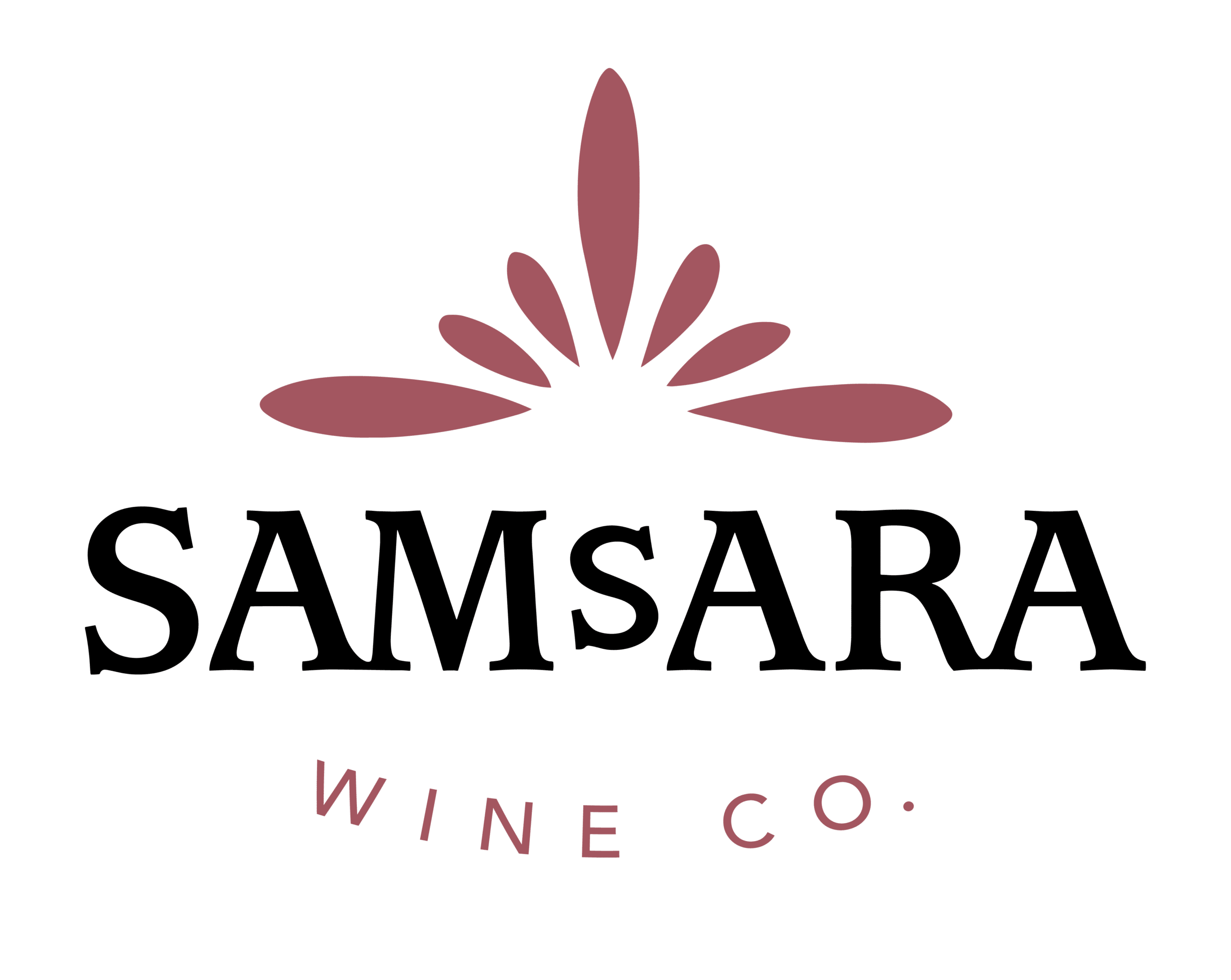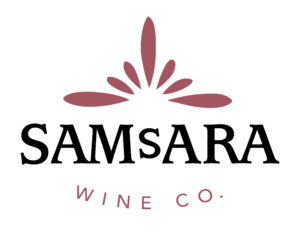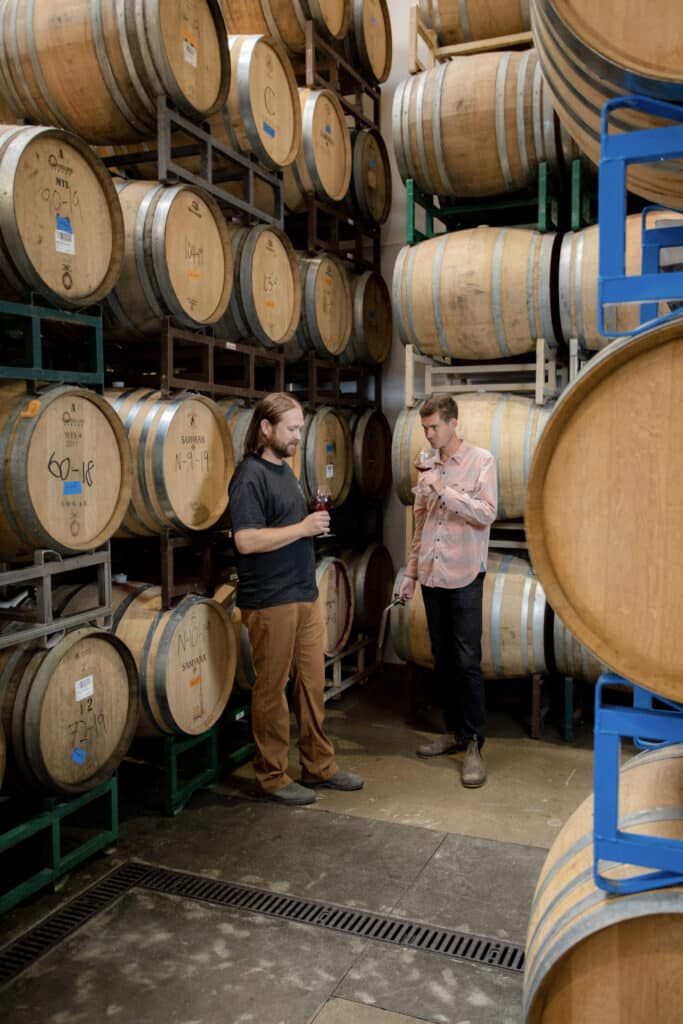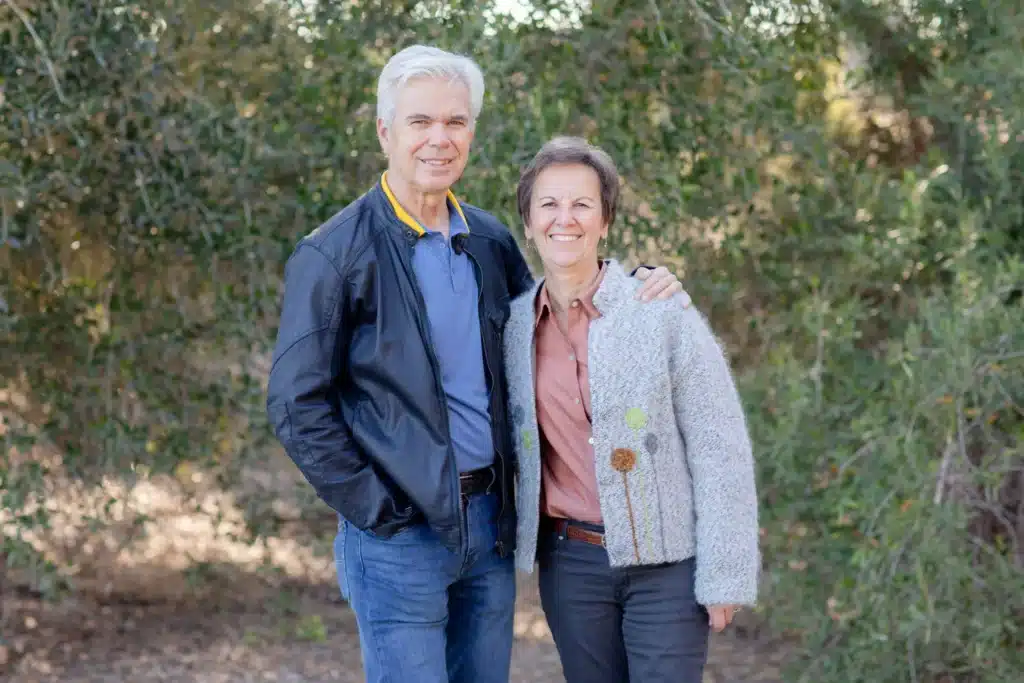WHOLE CLUSTER VS DESTEMMED GRAPES
Whether you’re a seasoned wine drinker or newly discovering the expansive world of wine, you probably want to know what the role whole cluster fermentation vs destemmed fruit has on the wine you’re drinking and how/why the winemaker chose to use either or both. We’re happy to explain not only the general principles associated with the use of whole cluster fermentation in winemaking, but also our philosophy of stem inclusion use here at SAMsARA.
WHOLE CLUSTER
Whole cluster fermentation is the process of fermenting grapes together with their stems. Sometimes left on the stem, and sometimes destemmed and then blended together, whole cluster fermentation can have a positive influence on the taste, texture, and how well wine can age.
The practice of not destemming grapes and fermenting the “whole cluster” is generally regarded as an old-world practice. However, stem inclusion is popular among producers who value refinement and a sense of adventure in their wines, particularly with Pinot Noir and Syrah.
Even though stem inclusion decreases acidity by supplying potassium to the mix, they also provide vitality and depth to wines.
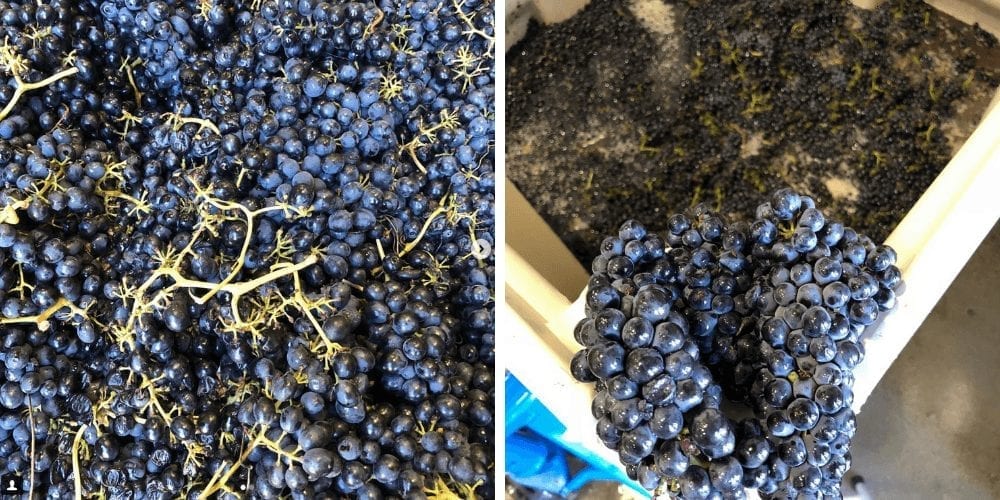
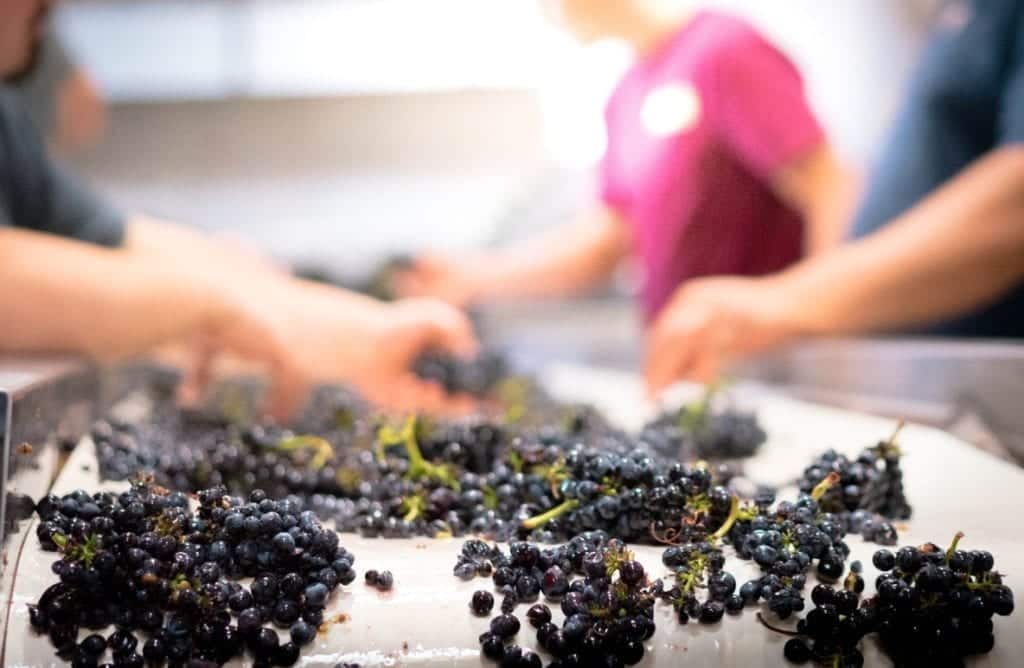
DE-STEMMED GRAPES
The process of separating the grapes from the stems is known as de-stemming. The aim of this process is to keep tannins to a minimum in wines that will already have texture and mouthfeel as well as a sense of weight and structure. With varietals like Cabernet Sauvignon, Zinfandel, Mourvèdre, Malbec, Tempranillo, Merlot and Sangiovese, adequate tannins are present in the skin of the fruit and it is not desired to enhance tannin content or raise the concentration. The inclusion of stems with these varietals intensifies astringency resulting in unpleasant, unbalanced wine.
Today, most red wine is made from destemmed grapes, in large part because Cabernet Sauvignon, Merlot, and Tempranillo are the top three grown wine grape varieties.
There are many variables involved in making the choice to de-stem such as climatic circumstances, the characteristics of the vine, and the style of wine the winemaker is trying to produce.
WHAT GRAPE VARIETALS BENEFIT MOST FROM WHOLE CLUSTER FERMENTATION?
Pinot Noir, Grenache, Gamay, and sometimes Syrah are the most common grape types that benefit from whole cluster fermentation as they have relatively thin skins, are not very tannic.
While grape variety can provide a good idea about the concentration of tannin in a wine, ripeness is also a consideration. A good example is Syrah. Syrah has a lot of tannin, but expresses itself differently, depending on the climate where it is grown and the particularities of each vintage.
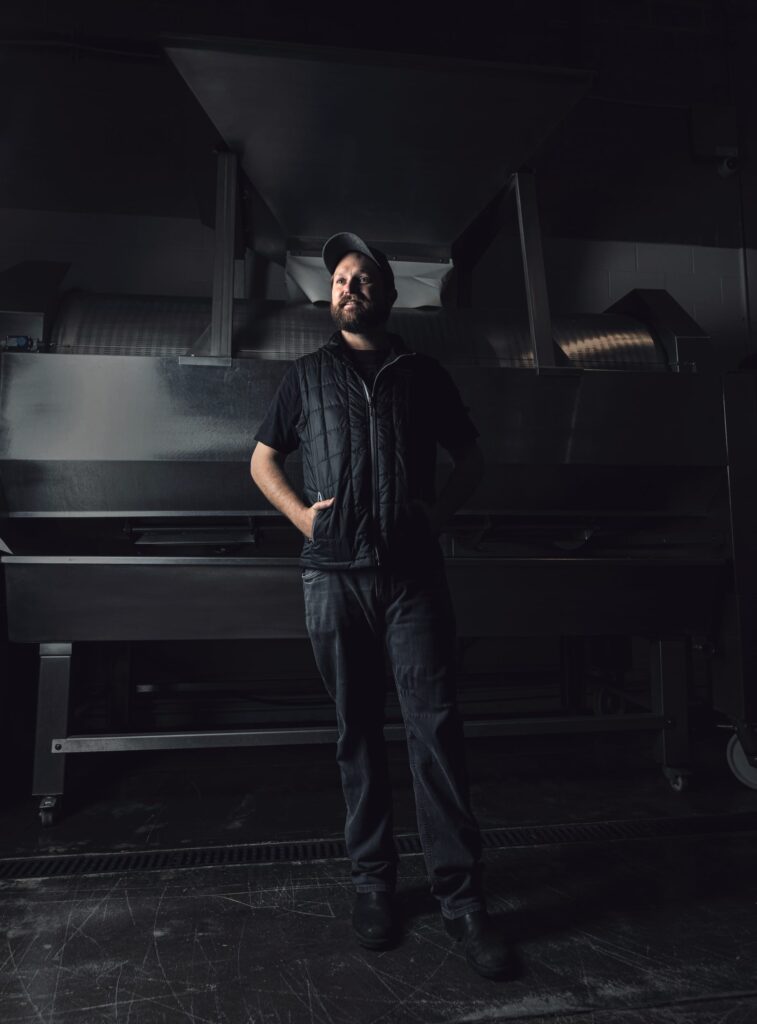
THE RIGHT AMOUNT OF STEMS?
Here at Samsara, we use different amounts of whole cluster fruit, depending on the character of the fruit that comes in from the vineyards. Our decision regarding how much stem inclusion to use is made very similarly to how we think about the use of new oak vs neutral oak with our pinot noir wines. We only want aromas, flavors, and texture from stems to enhance and round out our wines, but never to overpower them.
Radian Vineyard is a great example of how we determine what the correct whole cluster ratio should be. 2018 was our first vintage at Radian. It was a really long growing season, which is common in Santa Barbara vineyards. The crop had low hanging fruit with an extensive hang time. It was the darkest pinot noir we had ever seen. The acidity was high with a low pH because of its cool microclimate.
With its dark, powerful notes and ripping acidity, we decided it was a perfect candidate for a hundred percent whole cluster fermentation, even though our baseline is usually around 50-60 percent. It checked all the boxes to utilize increased stem inclusion and is now one of our favorite wines that we’ve ever made at SAMsARA. Even with the 100% whole cluster fermentation, the 2018 Radian vintage has no overpowering notes from the stems and the wine tastes complete.
Another great example is the use of a high percentage of whole clusters with our wines from Rancho La Vina vineyard. The fruit concentration from Rancho La Vina is always higher, the bold, dark fruit flavors are complemented by the spiciness of the stems and this vineyard always benefits from a high stem inclusion.
We are big believers in the use of whole cluster fermentation because our experience suggests stems impart exquisite flavor and complexity to the wines we make, increase age-ability and improve texture.
